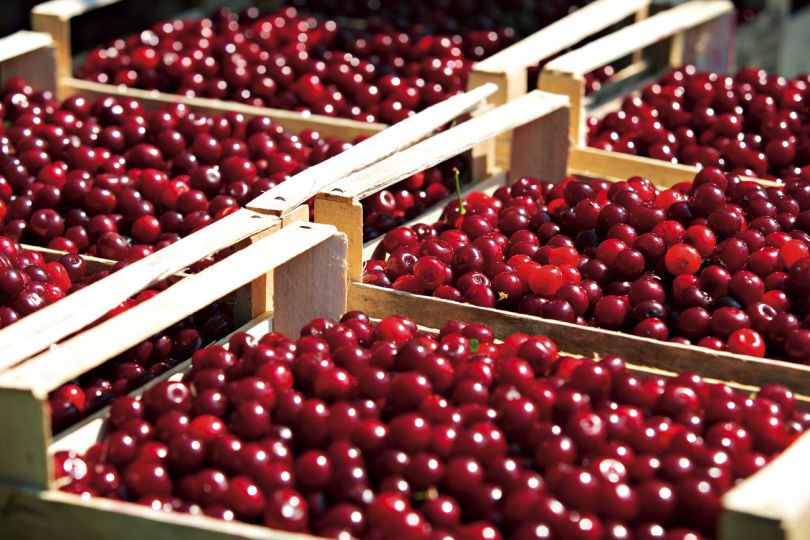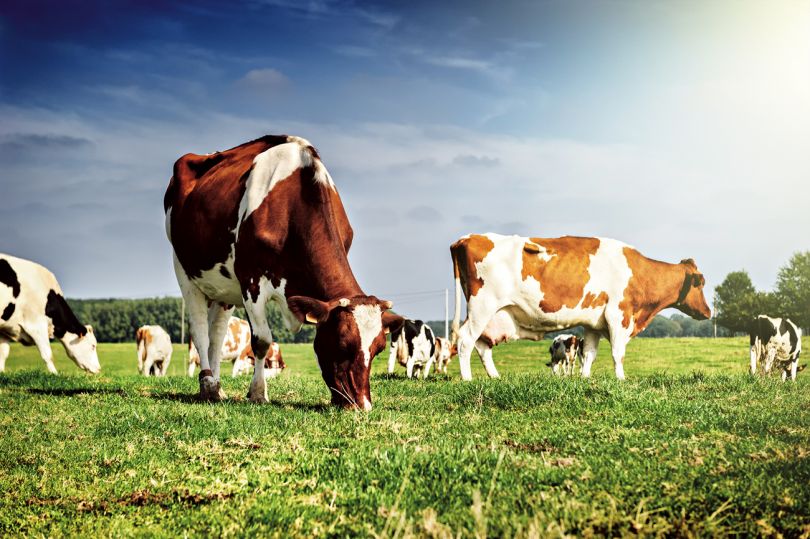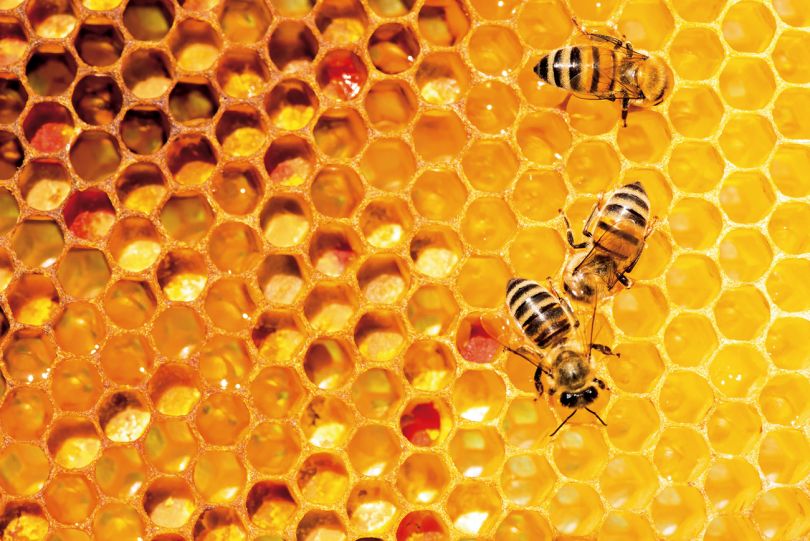Slobozhanshchyna and Prydniprovia (hereinafter referred collectively as the territory) boast a sizable local consumer market thanks to their large cities such as Kharkiv, populated by 1.4 million, Dnipro (over 1 million) and Zaporizhia (800,000). There are also a number of smaller towns with a population of over 100,000 people each.
The territory’s climate is conducive to crop production. Almost all of the local regions, for the exception of Sumy Region, lie within the Eurasian Chernozem belt. Dnipro Region ranks first in Ukraine in terms of available arable land, with almost 2 million ha; Kharkiv, Poltava and Zaporizhia regions come third, fourth and sixth, respectively, with about 1.7 million ha each. In other words, the territory includes four of the country’s six regions with most arable land.
The local agriculture mainly produces crops, particularly field crops like wheat, barley, maize, sunflower and soybeans. Dnipro Region, which has nearly 1.1 million ha of crop lands, ranks second in Ukraine, followed by Kharkiv, Zaporizhia and Poltava regions (in third through fifth positions) with almost 1 million ha each.
Responding to climate change
The territory’s climate is fairly heterogeneous. Poltava Region boasts benchmark Chernozem soils, while farmers in Zaporizhia Region are now complaining about too little moisture during the autumn season, when they have to sow winter crops. This is why more and more legumes get sown across the territory. Zaporizhia Region has been leading Ukraine for pea crops over the past couple of years, with 137,000 tonnes harvested per year. The region is also beginning to grow the exotic drought-resistant chickpeas and lentils.
The growing temperatures and aridity facilitate cultivation of durum wheat, which has a potential in the Ukrainian market because pasta wheats are still predominantly imported.
Millet could be another solution for arid areas. Its modern cultivars yield up to 6-7 tonnes per ha; the 2018 demand for millet indicates that it is competitive against sunflower seed. Millet growing is already being introduced in Kharkiv and Zaporizhia regions, which rank third and fourth in Ukraine respectively with almost 9,000 tonnes harvested annually. Dnipro Region is only slightly behind with 8,260 tonnes.
Oilseed flax is another promising crop for arid areas. Demand for this flaxseed grows commensurately with the popularity of healthy eating. Kharkiv and Zaporizhia regions currently rank third and fourth nationwide for the gross harvest of flax, each with more than 4,500 tonnes produced annually.
Kharkiv Region’s predominantly Chernozem soils along the banks of the Siversky Donets feature numerous sandy pockets. The local farmers have found a use for these: those of them who grow rye, a less moisture-thirsty culture than wheat, achieve high yields with hybrid seeds (6 tonnes per ha as compared to varietal rye’s yields of not more than 3 tonnes). They actually manage to sell their crops ahead of the actual harvest.
The lack of rainfall is a common problem for all of the territory. This is why Kharkiv Region is actively introducing such drought-tolerant crops as peas (110,000 tonnes harvested in 2017, the third largest result countrywide), chickpeas (3,800 tonnes, 2nd best in Ukraine) and lentils (1,500 tonnes, 3rd best).
Even Poltava Region, historically one of the country’s most favourable areas for agriculture, reported insufficient rainfall in 2017. Nevertheless, the region still attracts investors. It produced Ukraine’s third largest combined harvest of crops last year at 4.2 million tonnes, and led the country in maize production at 2.9 million tonnes. In terms of soybeans (315,000 t) and sugar beet (1.4 million t), Poltava Region ranked fourth nationwide; ditto for the gross volume of agricultural output (whenever the weather is more favourable, the region ranks 2nd nationwide).
No wonder, therefore, that Poltava Region is home to a number of agricultural majors (Kernel, UkrLandFarming, Chysta Krynytsya, Dokuchayevski Chornozemy, etc.). It is also one of the most environmentally friendly regions of Ukraine, with the local companies Agroecology and Arnika ranked among Europe’s largest organic producers. Ukraine’s first organic oils manufacturer Ukroliya Organic also operates here.
Oil-producing leaders
The territory historically cultivates sunflower, Ukraine’s most profitable export culture, and is renowned for its oil production capacities. Dnipro and Kharkiv regions lead the country for sunflower seed production, yielding 1.2 and 1.1 million tonnes per year respectively. Even Sumy Region, with its least favourable climate for growing sunflower, produced over 500,000 tonnes in 2017.
Major oil mills are to be found almost everywhere across the territory, for the exception of Sumy Region. Poltava and Kharkiv regions in particular are known for high concentration of oil producing factories. The Institute of Oilseed Crops outside Zaporizhia conducts cultivation experiments in the interest of the oil production industry.
Dnipro Region produces 128,000 tonnes of rapeseed per year. This drought- and frost-sensitive culture is less popular elsewhere across the territory.
Maize prospects
Slobozhanshchyna is a major producer of maize. Poltava Region in 2017 came 1st in Ukraine for maize production, and Sumy Region was fourth with almost 2.4 million tonnes harvested. Due to global warming, maize crops are gradually spreading further to the north, even to Polissia, as the steppe climate becomes ever more arid and new, early-maturing hybrids become available.
Maize seed farming is also big, with several seed businesses operating in Dnipro Region. Poltava Region features a production facility owned by the world-famous company Pioneer, which breeds maize, sunflower and rape. Seed cultivation requires higher investment, particularly in irrigation and technology, but the profits are worth it.
Soybeans are often cultivated alongside maize, but the only two regions in the east of Ukraine which actively grow the culture are Poltava and Sumy (over 250,000 tonnes per year).
Not on grain alone…
The territory’s massive crops industry allows for the development of processing capacities. It is more profitable to export flour than grain. Sumy Region, for one, leads the country for buckwheat production at almost 25,000 tonnes per year.
A number of sugar factories operate in Poltava, Kharkiv and Sumy regions, generating a steady demand for sugar beet. This industry requires further investment in cultivation technology for better yields.
Industrial hemp is grown in the north of Sumy Region by the world’s only specialised institute. The area is also known for its flax crops. Both cultures are potentially highly profitable, but investment is required in flax harvesting and processing equipment.
Fruit and vegetables as new exports
Equally profitable is the growing of vegetables, melons, as well as horticulture and the growing of berries. Kamianka-Dniprovska District in Zaporizhia Region leads Ukraine in greenhouse tomatoes. Again, for export significant investment needs to be made here, specifically in product marketing. Melitopol District, also in Zaporizhia Region, is famed for its output of fresh herbs.
Cherries are primarily grown in Zaporizhia Region, particularly in its southern districts. The berry has a high export potential, and is especially valued by Chinese customers. To make the industry even more appealing, refrigeration capacities need to be expanded and logistics improved. Besides, most of the cherry varieties grown in Ukraine do not enjoy any particular demand in Europe.
Zaporizhia Region’s Yakymivka and Melitopol districts specialise in the cultivation of melons. The sector could benefit from focusing on the varieties which are particularly popular in Europe and in Ukrainian supermarkets, as well as from investment in drip irrigation and packaging.
Horticulture and the growing of berries develop well in the warm climate. Too high temperatures and aridity prevent more widespread cultivation of berries across the territory, but investment in drip irrigation and shade nets could improve the situation. Drip irrigation systems do not require significant amounts of water as they only cover tens, sometimes hundreds of hectares of land.
Investments in irrigation of such field crops as maize, soybeans and sunflower could yield better harvests, particularly in Zaporizhia Region. The main obstacle here is the frequent lack of access to major irrigating canals. However, those farms situated near the Dnieper or the Kakhovka Reservoir could still benefit.
The land of milk and honey
Livestock breeding also has significant development potential in the east of Ukraine. Poltava Region leads the country for the size of bovine cattle and has the 4th largest pig stock. There are many dairy farms in Dnipro and Zaporizhia regions which, alongside Kharkiv and Poltava regions, boast developed milk processing facility. Even greater profits could be secured by developing exclusive, quality dairy production. Production of pork and beef is facilitated by the easy access to animal feeds such as maize, sunflower and soybean meals.
Beekeeping is another sector with high potential. Poltava Region is one of Ukraine’s largest honey producing areas. Sunflower and, in Sumy Region, buckwheat crops allow for the industry’s development elsewhere in the east of the country. The sector is evolving with the creation of industrial apiaries each comprising 100 and more beehives, as well as thanks to pre-sales value-added processing of honey, especially of the product intended for export (with the use of small branded containers, particularly in the case of private apiaries).
Slobozhanshchyna and Prydniprovia offer a favourable environment for investing in the cultivation of crops and certain varieties of fruit, as well as in livestock breeding and agricultural processing. The territory’s disadvantages include its remoteness from sea ports and the frequently insufficient level of investment in infrastructure.
Crop production is the most promising and economically appealing agricultural potential of Slobozhanshchyna and Prydniprovia. Indeed, the investment cycle in those two areas lasts less than a year, and the local fixed assets primarily come in the form of agricultural machinery.
Text by Kyrylo Pavliv
Photos: shutterstock (5)









